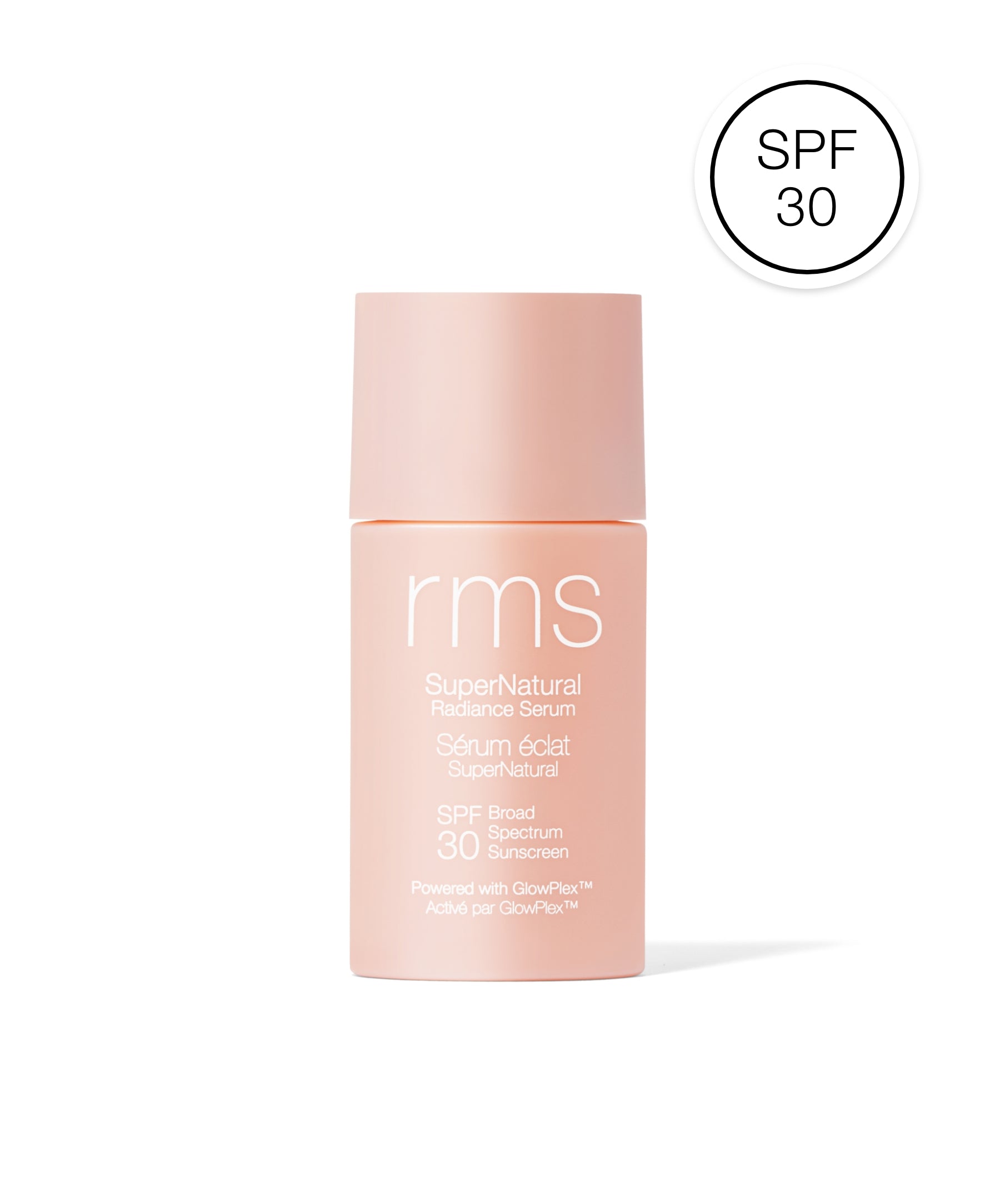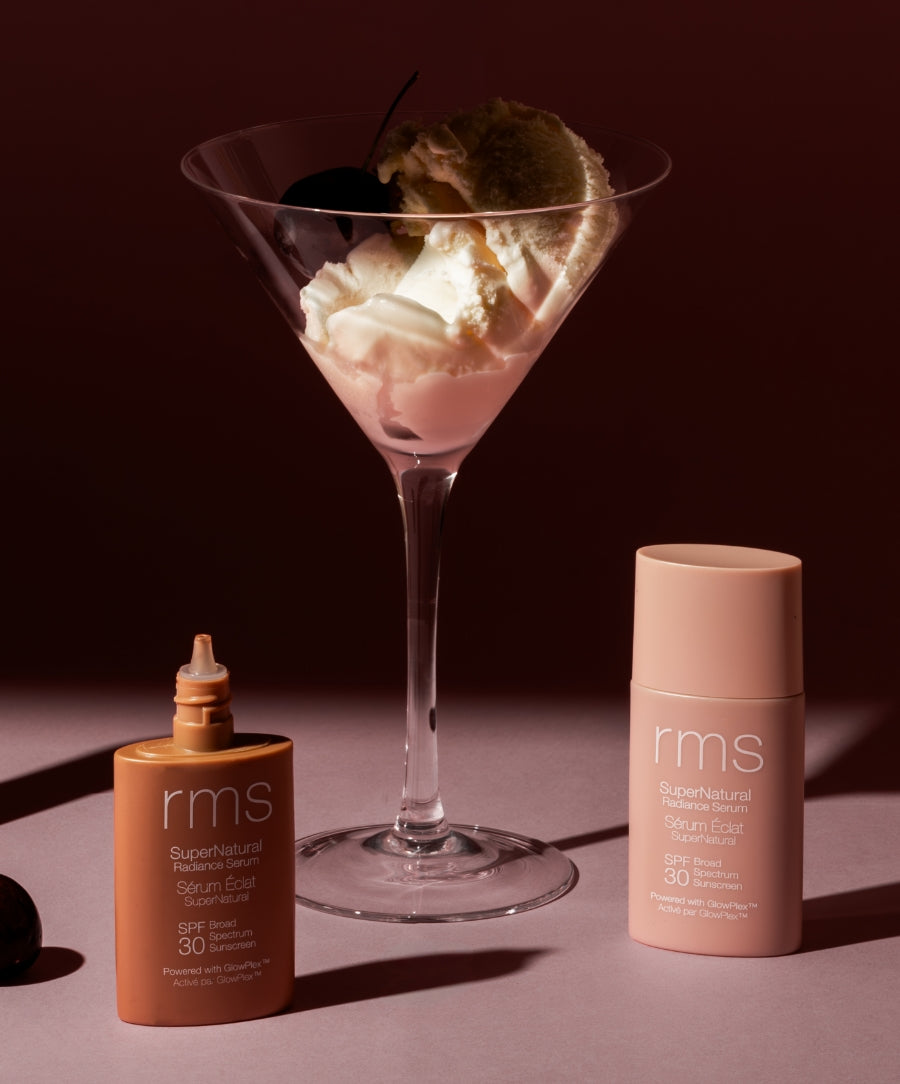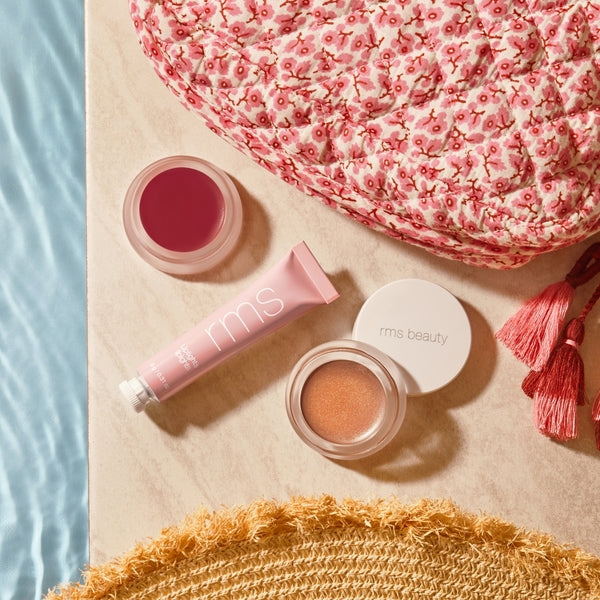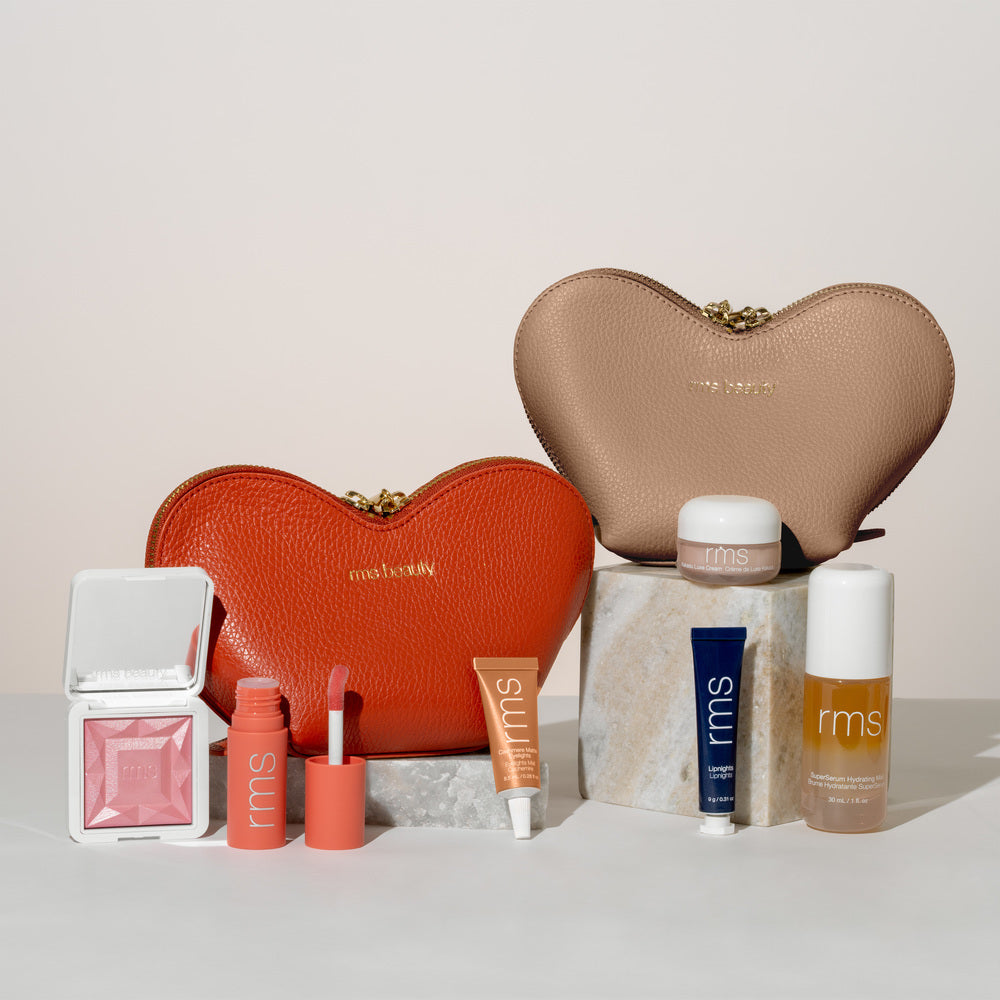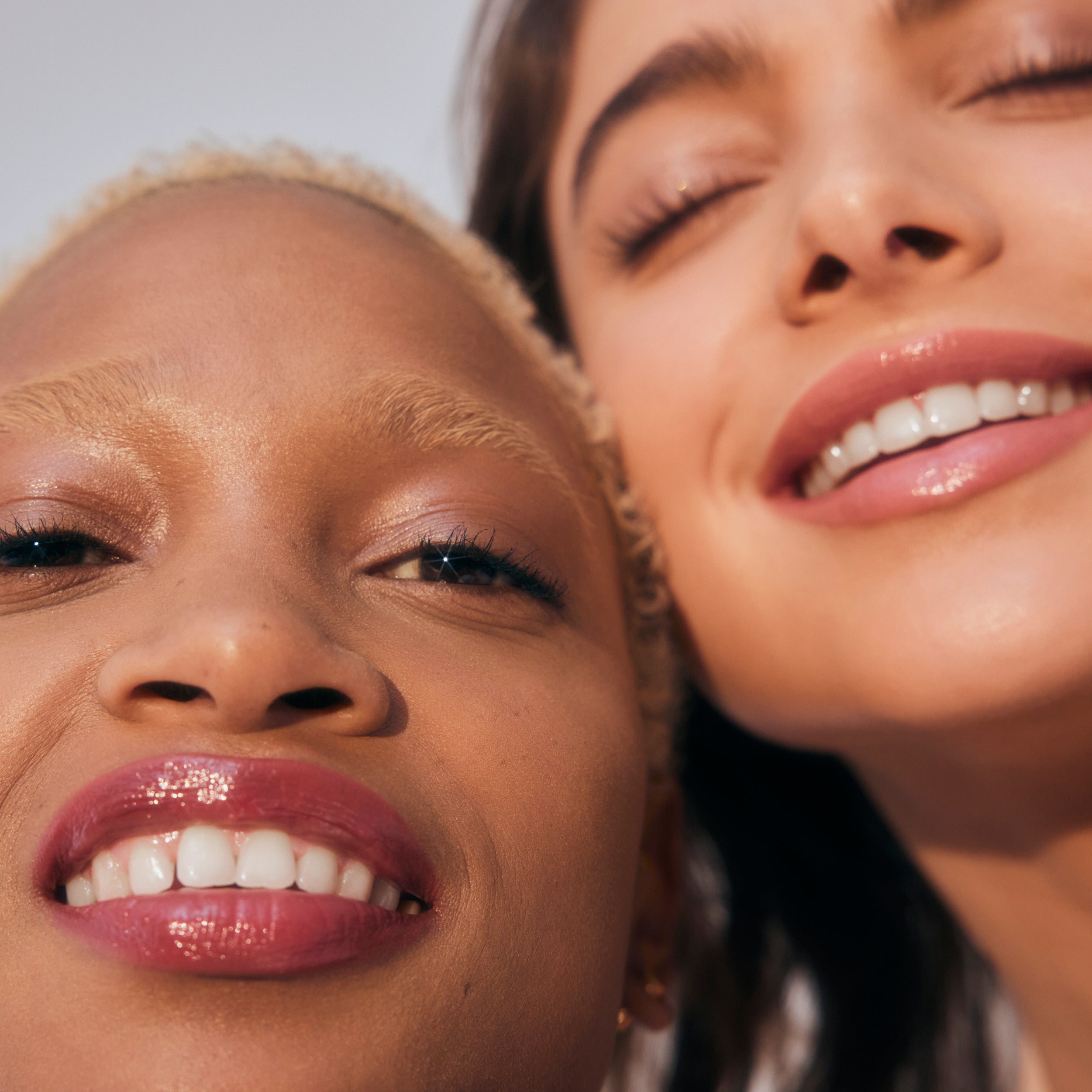Your 2026 Essential Guide to Sunscreen
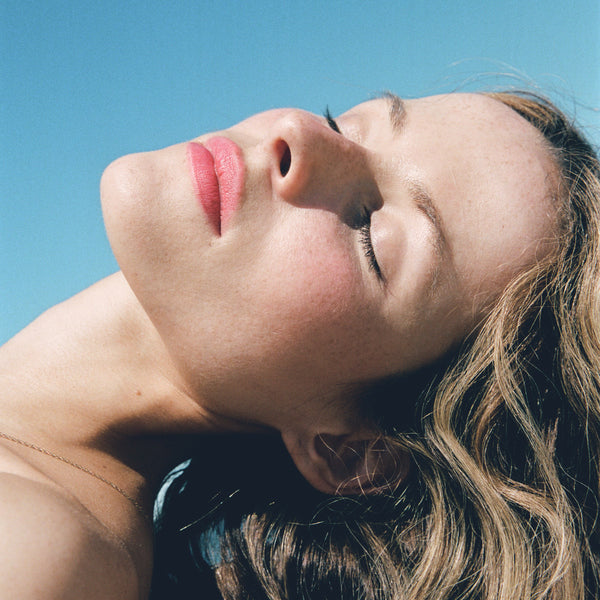
At RMS, we take sun protection very, very seriously. Often overlooked or misunderstood, sunscreen is a critical component of any skincare regimen. Its role extends beyond just preventing sunburn; it serves as a protective barrier against harmful ultraviolet (UV) radiation that can cause lasting damage to our skin—and in terms of beauty, that means wrinkles, sun spots, age spots, liver spots, and premature aging.
So we put together this comprehensive blog post that delves deep into sunscreen or sunblock, how it works, why it's so important, and why every single person—regardless of skin tone, skin type, or even the season—should be wearing it. Every. Single. Day.

The Science Behind Sunscreen
Sunscreen works by combining organic and inorganic chemicals that absorb, reflect, or “scatter” (i.e. disperse) sunlight. There are a few types of UV (ultraviolet) sunlight rays that sunscreen guards and protects our skin from:
- UVA Rays: These are long wave rays that penetrate deep into the skin, causing aging (wrinkles, sun spots, etc), long-term skin damage, and skin cancer. According to the University of Iowa Health Care, there are approximately 500 times more UVA rays in the sun’s light than UVB rays.
- UVB Rays: These rays affect the surface of the skin, leading to sunburn, irritation, and can also contribute significantly to skin cancer. These rays are what create a "tan".
- UVC Rays: While these are the most dangerous rays, they are absorbed by the Earth's atmosphere and ozone layer and don't reach our skin (unless, of course, you’re in space).

Mineral vs. Chemical Sunscreen
Sunscreens in the U.S. are categorized into two main types, and the difference between the two is primarily the ingredients and how they operate:
-
Mineral Sunscreens
Also known as "physical" sunscreens, these contain active mineral ingredients like zinc oxide or titanium dioxide. They’re usually natural and don’t have as many inorganic “chemical” ingredients, and they work by sitting on top of the skin and deflecting UV rays.
While they do sit on top of the skin, physical sunscreens—just like anything we apply on top of our skin—can absorb into the dermis if their formulation molecules are small enough. That’s why it’s important to opt for formulas with non-nano zinc oxide, to ensure they aren't small enough to penetrate.
-
Chemical Sunscreens
These contain organic (carbon-based) compounds like oxybenzone, avobenzone, and octinoxate. They absorb UV radiation and, via a chemical reaction, transform it into heat, which is then released from the skin. That means your skin is protected, because the rays never actually “hit” your body.
Chemical sunscreen ingredients are not natural (unlike physical sunscreen, which uses Zinc, a naturally occurring mineral). And, while they do absolutely offer sun protection, and many of the ingredients are technically FDA-approved, research has shown potential risks for many of the active ingredients in traditional chemical sunscreens, such as Octinoxate, Oxybenzone, Octocrylene, and Padimate O.
These ingredients can cause skin irritation for people with sensitive skin, and trace amounts are also absorbed into the bloodstream.

The Health Benefits of Sunscreen: Why You Need It
Skin Cancer Prevention
One of the most compelling reasons to use sunscreen is its role in preventing skin cancer, including melanoma. Regular application of sunscreen is scientifically proven to significantly reduce the risk of developing both melanoma and non-melanoma skin cancers by protecting the skin from harmful UV radiation (both UVA and UVB rays).
Prevention of Premature Aging
Exposure to UV rays accelerates the aging process by breaking down collagen and elastins (crucial for supporting skin) faster than they would on their own. Sunscreen acts as a shield, helping to maintain a youthful appearance by blocking these aging rays.
Protection from Sunburn
Sunburn is an immediate sign of skin damage from UV exposure, and it can also increase your risk for skin cancer. Sunscreen helps prevent the painful redness and peeling associated with sunburn, which, if repeated, can lead to more severe skin concerns.
Sunscreen Benefits All Skin Types and Tones
Regardless of skin type or tone, everyone can benefit from sunscreen. For those with fair skin, the protection against burning and long-term damage is crucial. For darker skin tones, while the risk of burning is lower, the protection against skin cancer and hyperpigmentation is equally important.

How to Choose the Right Sunscreen
We get it—choosing the right sunscreen can be…complicated. But we’re here to try to make it a little easier. Here are key factors to consider:
Understanding SPF Ratings
SPF, or Sun Protection Factor, indicates how well a sunscreen protects against UVB rays. An SPF 15 blocks 93% of UVB rays while SPF 30 blocks 97%. Just remember that these numbers were determined in a lab setting where there was no variation in the light source or how well you applied the lotion.
Higher SPF values offer greater protection, but no sunscreen can block 100% of the sun's rays. Most experts agree that the difference in protection in sunscreens higher than SPF 30 isn't noticeable enough to make too much of a difference.
Broad-Spectrum Protection
Look for sunscreens labeled "broad-spectrum," which means they protect against both UVA and UVB rays. This ensures comprehensive coverage against the various types of skin damage caused by the sun.
Water-Resistant Formulas
If you’re swimming or sweating, a water-resistant sunscreen is essential. These formulas, when applied correctly, are designed to remain effective for a certain period, usually 40 or 80 minutes, even when exposed to water.
Consider your Skin Type
-
Oily Skin: Opt for oil-free or non-comedogenic sunscreens to prevent clogged pores.
-
Dry Skin: Look for moisturizing sunscreens that contain hydrating ingredients like glycerin or hyaluronic acid.
-
Sensitive Skin: Choose sunscreens with gentle, hypoallergenic formulas and avoid fragrances or irritants (we suggest skipping chemical sunscreens all together in this instance, and instead opting for a mineral or physical sunscreen).
-
Acne-Prone Skin: Select lightweight, non-comedogenic products that won’t exacerbate breakouts. Also check your formula’s inactive ingredients to make sure it doesn’t contain anything irritating to acne-prone skin.

Application Tips for Maximum Protection
Proper application is key to effective sun protection. Here are some tips:
How to Properly Apply Sunscreen
Apply sunscreen to all exposed skin areas, including often-missed spots like the ears, neck, and feet. It’s best to apply it inside, before you reach your destination, where the lighting is optimal and you're less likely to miss a spot or apply unevenly.
How Much Sunscreen to Use
A common mistake is not using enough sunscreen. An ounce (about a shot glass full) is the recommended amount for covering the entire body. For the face, a nickel-sized dollop will do.
When to Reapply
Sunscreen should be reapplied every two hours, or immediately after swimming, sweating, or towel drying. Even water-resistant formulas need reapplication to maintain effectiveness.
Importance of Applying Sunscreen Year-Round
Up to 80% of UV rays can penetrate clouds and windows, making sunscreen necessary even on cloudy days and indoors—especially if you’re on a plane. And UV rays are present all year long, that’s why reflective surfaces like snow can intensify exposure in the winter. Incorporating sunscreen into your daily routine ensures consistent protection.

Meet SuperNatural Radiance Serum Broad Spectrum SPF 30
The sun protection you’ll never be able to live without. Our SuperNatural Radiance Serum SPF 30 is not your traditional sunscreen, because it applies like a tinted serum, but seriously protects and is ultra luminizing. That’s why we say this super lightweight, nourishing sunscreen, glows, protects, and corrects—all in one.
It’s formulated with complexion correcting soft-focus technology and powered by GlowPlex™, a complex of natural peptides such as Quinoa Seed Extract, Niacinamide and Pea Extract. The subtle, soft-focus radiant filter with a hint of tint nourishes, while non-nano zinc oxide protects from the sun’s damaging rays. And the best part is that it smoothes skin and boosts radiance instantly and over time.
It comes in three shades, Light Aura, Medium Aura, and Rich Aura, and is the first sunscreen you’ll actually want to reapply, time and time again.
Protect and Get Glowing
Incorporating sunscreen into your daily skincare routine is a small step with significant benefits. From preventing skin cancer and premature aging to protecting against sunburn, the advantages of using sunscreen are super clear; and if you’re using one you love, like our SuperNatural Radiance SPF 30, you’ll be happy to use it, day in and day out. Make sunscreen a non-negotiable part of your daily routine, regardless of the season or weather, and we promise…future you will thank you.



